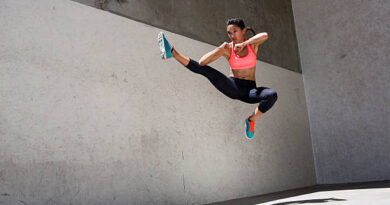Which martial arts is best for flexibility?
Exploring the Benefits of Flexibility Training in Martial Arts
Flexibility training is an important component of martial arts, as it helps practitioners to move more efficiently and effectively. It can also help to reduce the risk of injury, as well as improve overall performance. In this article, we will explore the benefits of flexibility training in martial arts and how it can help practitioners to improve their skills.
Flexibility training helps martial artists to increase their range of motion, which can improve their ability to perform certain techniques. For example, a martial artist with greater flexibility can perform kicks and punches with greater power and accuracy. Additionally, increased flexibility can help to reduce the risk of injury, as it allows the body to move more freely and with less strain.
Flexibility training can also help martial artists to improve their balance and coordination. By increasing their range of motion, martial artists can move more quickly and accurately, which can help them to better execute techniques. Additionally, increased flexibility can help martial artists to better control their movements, which can help them to avoid injury.
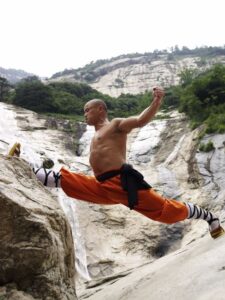
Finally, flexibility training can help martial artists to improve their overall performance. By increasing their range of motion, martial artists can move more efficiently and effectively, which can help them to better execute techniques. Additionally, increased flexibility can help martial artists to better control their movements, which can help them to avoid injury.
In conclusion, flexibility training is an important component of martial arts, as it helps practitioners to move more efficiently and effectively. It can also help to reduce the risk of injury, as well as improve overall performance. By increasing their range of motion, martial artists can move more quickly and accurately, which can help them to better execute techniques. Additionally, increased flexibility can help martial artists to better control their movements, which can help them to avoid injury. Therefore, flexibility training is an important part of any martial arts practice and can help practitioners to improve their skills.
Comparing Different Martial Arts Styles for Flexibility
Flexibility is an important component of martial arts, as it allows practitioners to move quickly and efficiently. Different martial arts styles have varying levels of flexibility requirements, and it is important to understand the differences between them in order to choose the right style for your needs.
Karate is a popular martial art that emphasizes striking and blocking techniques. It requires a moderate level of flexibility, as practitioners must be able to move quickly and accurately to execute the techniques. Karate practitioners must be able to move their arms and legs in a wide range of directions, and they must also be able to twist and turn their bodies in order to dodge and counter attacks.
Judo is another popular martial art that focuses on throws and grappling techniques. It requires a high level of flexibility, as practitioners must be able to move their bodies in a wide range of directions in order to execute the techniques. Judo practitioners must be able to move their arms and legs in a wide range of directions, and they must also be able to twist and turn their bodies in order to execute throws and other techniques.
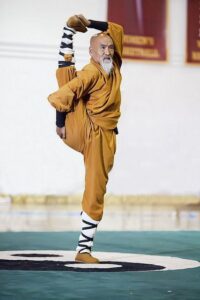
Tai Chi is a martial art that emphasizes slow, controlled movements. It requires a low level of flexibility, as practitioners must be able to move slowly and accurately in order to execute the techniques. Tai Chi practitioners must be able to move their arms and legs in a wide range of directions, and they must also be able to twist and turn their bodies in order to execute the techniques.
When choosing a martial art, it is important to consider the level of flexibility required. Karate requires a moderate level of flexibility, Judo requires a high level of flexibility, and Tai Chi requires a low level of flexibility. By understanding the differences between these martial arts styles, practitioners can choose the style that best suits their needs.
How to Improve Flexibility Through Martial Arts Training
Martial arts training is an excellent way to improve flexibility. Flexibility is an important component of physical fitness, as it helps to improve range of motion, reduce the risk of injury, and improve overall performance. By incorporating martial arts training into your fitness routine, you can improve your flexibility and reap the many benefits that come with it.
The first step to improving flexibility through martial arts training is to warm up properly. Before beginning any martial arts training, it is important to warm up the muscles and joints. This can be done by performing dynamic stretches, such as arm circles, leg swings, and torso twists. This will help to increase blood flow to the muscles and joints, which will help to reduce the risk of injury.
Once you have warmed up, it is important to focus on stretching. Stretching is an important part of martial arts training, as it helps to improve flexibility and range of motion. It is important to focus on stretching the major muscle groups, such as the hamstrings, quadriceps, and calves. It is also important to focus on stretching the joints, such as the shoulders, elbows, and wrists.
In addition to stretching, it is important to incorporate martial arts drills into your training. Martial arts drills are designed to help improve flexibility and range of motion. These drills can include kicking drills, punching drills, and grappling drills. By performing these drills regularly, you can improve your flexibility and range of motion.
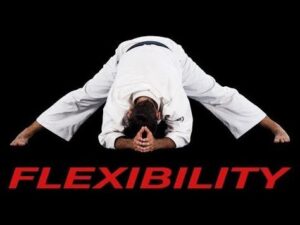
Finally, it is important to practice martial arts techniques regularly. Martial arts techniques are designed to help improve flexibility and range of motion. By practicing these techniques regularly, you can improve your flexibility and range of motion.
By incorporating these tips into your martial arts training, you can improve your flexibility and reap the many benefits that come with it. Improved flexibility can help to reduce the risk of injury, improve performance, and improve overall physical fitness.
The Role of Flexibility in Martial Arts Performance
Flexibility is an important component of martial arts performance. It is essential for martial artists to have a high degree of flexibility in order to perform the various techniques and movements required in martial arts. Flexibility allows martial artists to move with greater ease and agility, and to execute techniques with greater precision and power.
Flexibility is important for martial arts performance in several ways. First, it allows martial artists to move with greater speed and agility. This is especially important in martial arts that involve sparring or competition, as it allows martial artists to move quickly and accurately to counter their opponents’ moves. Second, flexibility helps martial artists to execute techniques with greater precision and power. This is because flexible muscles are able to generate more force than stiff muscles, allowing martial artists to perform techniques with greater power and accuracy. Finally, flexibility helps martial artists to avoid injury. Stiff muscles are more prone to injury than flexible muscles, so having a high degree of flexibility can help martial artists to avoid injury during training and competition.
In order to improve flexibility for martial arts performance, martial artists should incorporate stretching into their training routine. Stretching helps to increase flexibility by lengthening the muscles and improving their range of motion. Martial artists should focus on stretching the muscles that are used most often in their martial arts practice, such as the legs, hips, and shoulders. Additionally, martial artists should incorporate dynamic stretching into their training routine. Dynamic stretching involves performing movements that mimic the movements used in martial arts, such as kicks and punches. This type of stretching helps to improve flexibility and prepare the body for martial arts performance.
In conclusion, flexibility is an important component of martial arts performance. It allows martial artists to move with greater speed and agility, to execute techniques with greater precision and power, and to avoid injury. Martial artists should incorporate stretching into their training routine in order to improve their flexibility and maximize their martial arts performance.
Understanding the Different Types of Flexibility Training in Martial Arts
Flexibility training is an important part of martial arts, as it helps to improve the range of motion of the body and reduce the risk of injury. There are several different types of flexibility training used in martial arts, each of which has its own unique benefits. In this article, we will discuss the different types of flexibility training used in martial arts and how they can help improve your performance.
Static stretching is the most common type of flexibility training used in martial arts. This type of stretching involves holding a stretch for a period of time, usually between 10 and 30 seconds. Static stretching helps to increase the range of motion of the muscles and can help to reduce the risk of injury.
Dynamic stretching is another type of flexibility training used in martial arts. This type of stretching involves moving through a range of motion while stretching the muscles. Dynamic stretching helps to increase the range of motion of the muscles and can also help to improve coordination and balance.
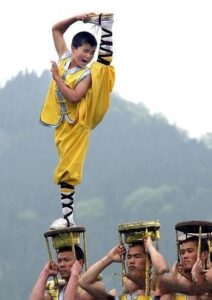
Proprioceptive neuromuscular facilitation (PNF) is a type of flexibility training used in martial arts that combines static and dynamic stretching. PNF involves stretching the muscles while contracting them, which helps to increase the range of motion of the muscles and can also help to improve coordination and balance.
Ballistic stretching is a type of flexibility training used in martial arts that involves bouncing or jerking movements. This type of stretching can help to increase the range of motion of the muscles, but it can also increase the risk of injury if done incorrectly.
Finally, active isolated stretching (AIS) is a type of flexibility training used in martial arts that involves stretching the muscles while actively contracting them. This type of stretching helps to increase the range of motion of the muscles and can also help to improve coordination and balance.
In conclusion, there are several different types of flexibility training used in martial arts, each of which has its own unique benefits. It is important to understand the different types of flexibility training and how they can help improve your performance.
Conclusion
Overall, the best martial art for flexibility depends on the individual’s goals and preferences. Some martial arts, such as yoga and tai chi, are specifically designed to increase flexibility, while others, such as karate and judo, are more focused on strength and power. Ultimately, the best martial art for flexibility is the one that best suits the individual’s needs and interests.

